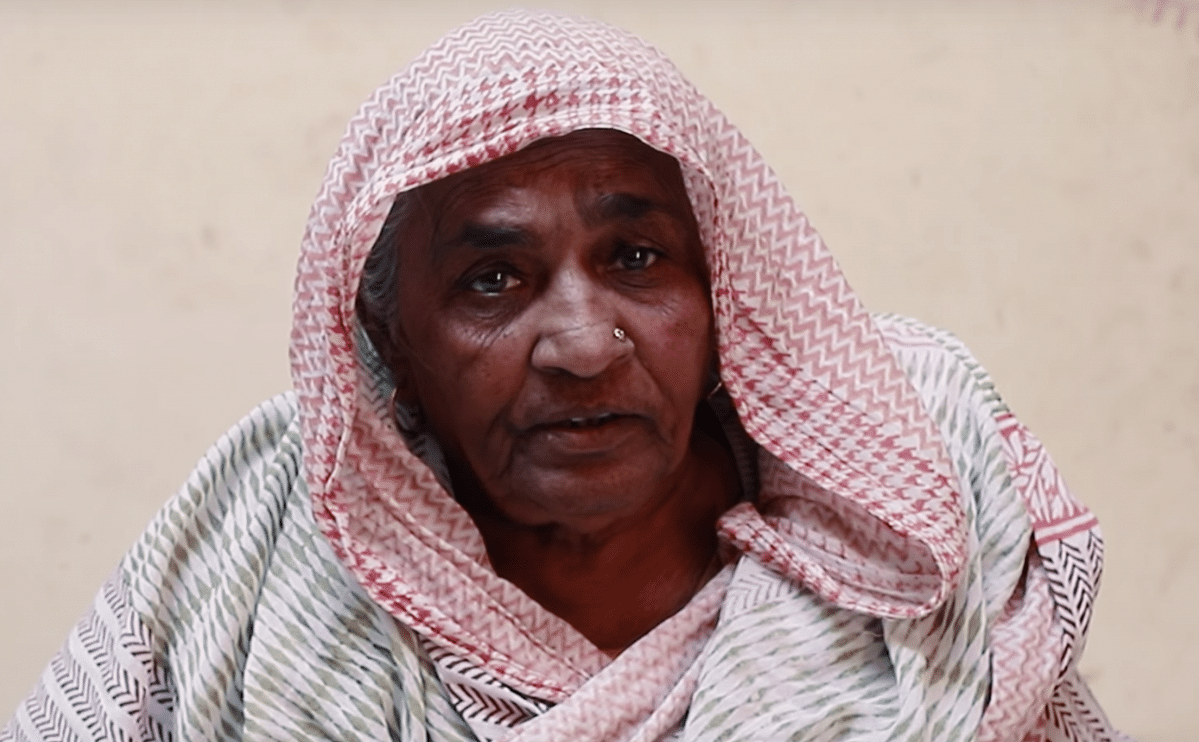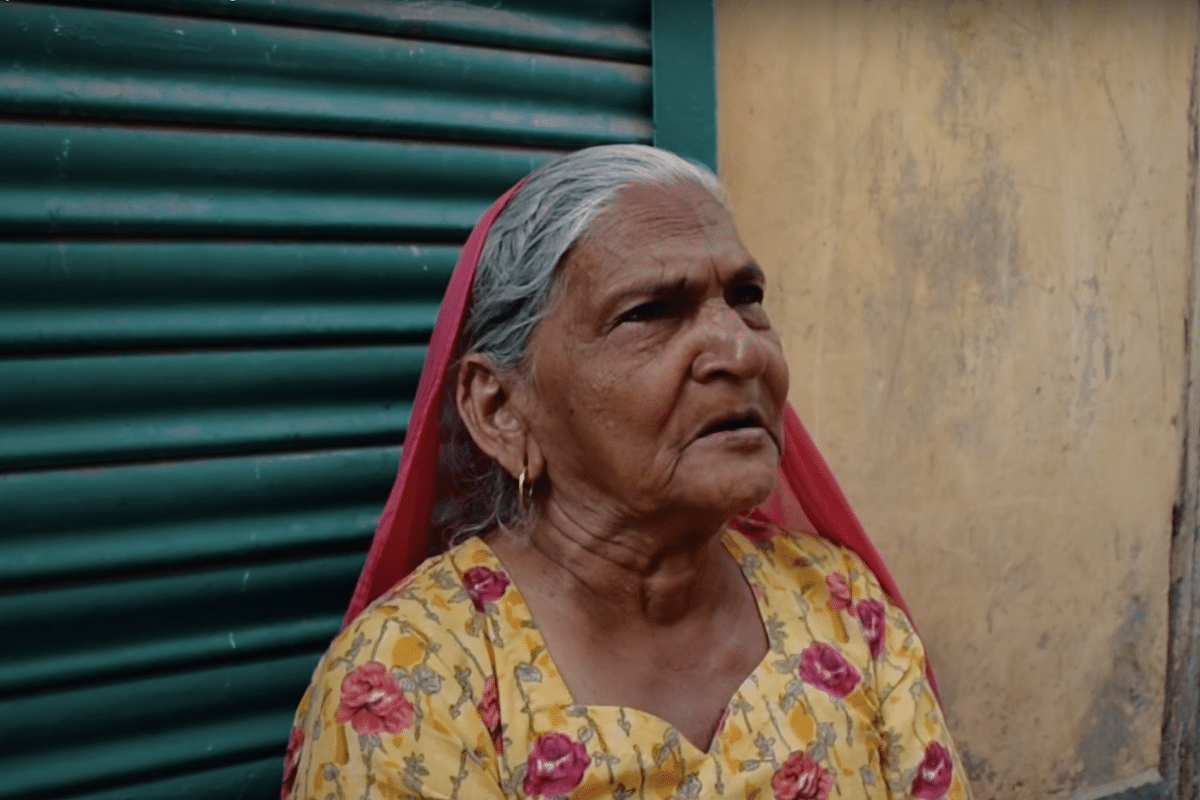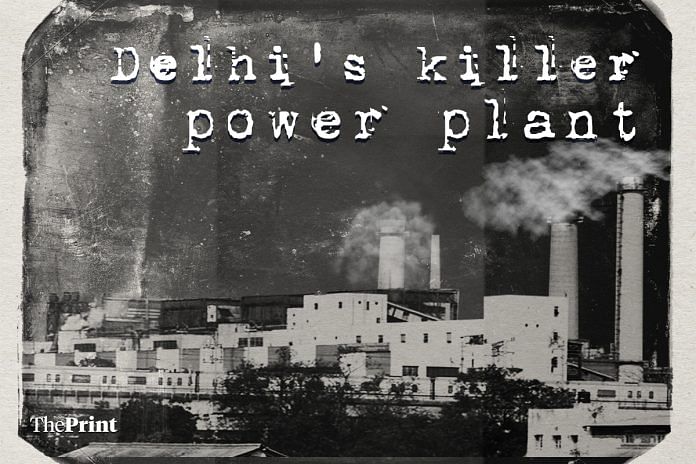Molarband residents blame Badarpur power plant for dozens of cancer & TB cases. But NTPC rejects the complaints, says emission levels are within safe limits.
New Delhi: Rajpal Bhadana, a dairy farmer, died two years ago. His son quit college to take over the business. Cause of death: throat cancer.
Shreepal Singh was a woodcutter who died five years ago. Cause of death: Tuberculosis, followed by throat cancer.
Jaikaran Singh Lohiya was also a farmer. He was being treated at Apollo Hospital but did not make it. Cause of death: throat cancer.
Rampal Lohmor was a maintenance worker at the National Thermal Power Corporation’s (NTPC) Badarpur power plant, and his job involved handling coal. He died four years ago. Cause of death: throat cancer.
Shakuntala Devi lost her husband and a cousin, both to throat cancer. One boy in her neighbourhood, Rajpal, died of throat cancer two years ago. Shanti Devi Bhadana’s son is also battling throat cancer, and is in hospital.
Maamchand Bhadana, the local pradhan; Nirjo Chhabro, who works in the local sub-divisional magistrate’s office; Pritam Bhagat and Bedan Pradhan have all been diagnosed with throat cancer at various stages and are undergoing treatment. Bhagat’s wife also died of throat cancer.
This is Molarband village – a little-known, nondescript rural pocket on the southeastern edge of the national capital. It abuts the coal-based 705 MW Badarpur power plant operated by the public sector NTPC. But the villagers say they live next door to death, fearing, if not awaiting, who’s next. Their fears have only increased since the plant reopened earlier this month.
The villagers believe pollution from the power plant is causing deadly diseases such as cancer and tuberculosis, and not without reason. Some 40 cases of lung and throat cancer have been detected among the area’s 20,000 population over the past 20 years, and 55 tuberculosis patients are currently under treatment.
But NTPC rejected the complaints. A spokesperson said NTPC has done much to control pollution, and that the levels of suspended particulate matter are well within safe limits.
Those claims are of little consolation to Shanti Devi, a Molarband resident for 60 years. “They took our land for the plant, and now they will take my son’s life,” she lamented.
Shakuntala Devi, who has lived in Molarband for 55 years – since about a decade before the power plant was set up – adds: “Everything here turns black from the ash flowing in from the plant, and when the plant runs and you can hardly breathe. The skin burns and cracks. Along with your breath, the ash goes inside your chest.”
“He never smoked or chewed tobacco,” she says referring to her husband. “The doctor explained that a clot formed in his throat, which became cancerous.” She spent Rs 22 lakh on her husband’s treatment until he died.

Winter gone, plant on
The Badarpur power plant was ordered shut by the Supreme Court-appointed Environment Pollution Control Authority (EPCA) last October, to curb air pollution in Delhi, one of the most polluted cities in the world, ahead of Diwali celebrations.
The plant has been ordered to close permanently from July this year, but the EPCA allowed it to reopen temporarily from 1 March due to the change in season and improvement in air quality. Now, there is confusion whether the plant will shut down for good as decided from July, with government agencies not keen to bite the bullet and passing it around in what is seen as an attempt to avoid the financial burden of the decision.
But problems associated with the plant are long-running.
In 2015, the Badarpur plant was declared the poorest performing of all coal-based power plants in Delhi on the parameters of environmental performance and energy efficiency by Delhi-based environmental research group Centre for Science and Environment (CSE).
While contributing a relatively meagre share of Delhi’s power – 7.9 per cent during April to October 2015 – this plant contributed 80-90 per cent of the particulate matter, sulphur oxides and nitrogen oxides – all major pollutants – from the energy sector in Delhi, the CSE found.
That same year, a report released by the Indian Institute of Technology, Kanpur, also said the Badarpur power plant was responsible for spewing excessive fly ash, a major pollutant in Delhi’s environment. Coal ash, of which fly ash is a part, was estimated to account for about 30 per cent of PM10 (particulate matter measuring up to 10 micrometres in size) for 2015.
Apart from emissions, the dumping of fly ash over an area of 1,680 acres beside the plant is a major contributor of PM 2.5 (particulate matter up to 2.5 micrometres in size) in the air.
Nothing much has changed as far as the efficiency of the plant is concerned. Although it has an installed capacity of 705 MW, it produced an average of 160 MW – or less than 25 per cent – last year when it was not shut during the high-pollution winter months.

Breathing coal and ash
“The planning done by the NTPC to set up this plant was completely wrong,” said Baleshwar Verma, chairman of the Gram Vikas Samiti (village development committee) of Molarband.
“They never saw that coal storage is right beside the village boundary and never considered its effects on us. They neglected the fact that the wind blows from west to east, which brings coal into villagers’ homes.”
Verma said people fall critically ill during the summer, when strong winds blow. “During this time, we used to wake up and cough out black phlegm, and if we stepped out, our clothes would turn black. We appealed to the NTPC officers multiple times, but it was of no use,” he said.
But Vijay Juyal, the public relations officer of NTPC, countered the complaints and said the plant was using the ash generated to make bricks, among other things. “The NTPC has planted two lakh ipomoea trees and sprinklers around. We also brought our SPM level to 50 mg” – which is well within safe limits, he said.
Ipomoea is a flowering plant which prevents fly ash from becoming airborne.
The villagers, however, say they do not believe NTPC’s claims.
“They tell the pollution department they have put sprinklers and trees but those are an eye wash,” Verma said. “It is the loading and unloading of the ash that is the problem, even if it is in the process of utilisation.”
He said the dust rises about 100-150 feet, while the sprinklers and plants are only 20-40 feet high. “It is like trying to settle a dust-storm in a desert with three buckets of water,” he said.
Incidentally, NTPC has also partnered with an NGO, Optimum Resource Development Agency (ORDA), to run a health centre in Molarband. And it is this health centre that is treating and keeping a tab of the diseases in the village.
Currently, 55 patients are under treatment at the centre for tuberculosis, while cases of cancer are often sent to the nearby Apollo Hospital in Jasola or the All India Institute of Medical Sciences (AIIMS).
“There are many whom we have to treat for TB,” said Rishipal Lohiya, chairman of ORDA. “So many people we lost were actually villagers employed at NTPC for maintenance work.”
Who will issue the order to shut it down?
According to the EPCA order, the Badarpur power plant has to permanently shut down on 1 July this year. An NTPC official, however, said the corporation has received no instructions in writing, implying that the plant could continue operations.
“The government is also confused about whether they will need the power from the plant or not. When there is a demand for power, the government forgets pollution norms. Everyone needs power,” said the NTPC official, who spoke on condition of anonymity.
The plant has also incurred heavy losses as employees were paid even though it had shut down temporarily, he added. There were instructions to shut the plant down but not in writing, the official said, “because whoever writes it will have to pay us the value of our land and property, which is the major issue”.
As a result, agencies of the Delhi government and the Centre are passing what is a heavy parcel.

Although the Centre has in the past said that Delhi’s AAP government can force the plant to shut down under the power purchase agreement with NTPC after paying a fixed cost to the company to help it recover its investments, its representatives told ThePrint this is not in their hands.
“Delhi government did not set it up, Delhi government has no control over it. Delhi government has nothing to do with the power plant,” Nagendar Sharma, media advisor to chief minister Arvind Kejriwal, told ThePrint.
Senior AAP leader Atishi Marlena echoed that. “NTPC is a central government PSU. Delhi government has no jurisdiction to ask them to shut down the plant,” she said.
Union environment secretary C.K. Mishra said the central government “intends to keep it closed” and that NTPC would do it on its own.
“The ministry has directed that for the present the power plant should be shut down in July,” Mishra told ThePrint. “For good is not a decision right now. The present decision is that for the present it be closed. That decision we will take at that point of time, these decisions can’t be taken like that. We are working on it. For the present, it will be closed.”
But Sunita Narain, EPCA member and director-general of environment advocacy organisation Centre for Science and Environment, insists there is no confusion about the Badarpur power plant.
“As far as Badarpur is concerned, in my view there is no confusion, it is scheduled for permanent shut down on 20 July 2018,” Narain told ThePrint. “It is a part of the comprehensive (graded action) programme, which has been notified now by the ministry of environment, under the Supreme Court orders, and there should be no confusion about it.”
The decision, she said, had gone beyond the EPCA to a higher authority, which in this case is the union environment ministry and “they have to act on it”.
“For the four months that it is opening, as far as that is concerned, it is being done only because we need the sub-station, which supplies power to south Delhi. The sub-station will be done with by July. Because of the sub-station, we weren’t able to push for closure but now that will be shut down by July,” Narain said.




Same situation among peoples living nearby Deepnagar Thermal Power Station, Bhusawal is being observed since many years. This region has become ‘Hot Zone’ for Tuberculosis and Cancer. Moreover, Coal-Mercury contamination in Tapi river is causing deadly accumulation of Mercury in Fish which are consumed by local peoples. High levels of Mercury in human causes Mental Disorders, Kidney and Liver Failure.
Come 1st July, sooraj doobne se pehle, it should be shut down. For good.
This journalist has not left any issue untouched the story is very informative useful and eye opener. Keep it up to shake the system